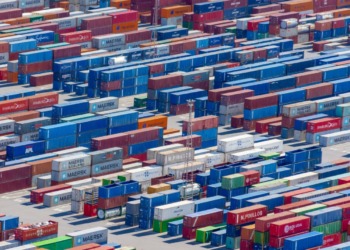We are early days in the Russian invasion of Ukraine and do not know whether it will be a short or long-drawn-out incursion. Military conflict obviously causes deaths and injuries on the battlefield, but there are significant health consequences from the displacement of populations, the breakdown of health and social services, and the heightened risk of disease transmission in the embattled country.
A separate impact is on the health systems of neighboring countries which must cope with unanticipated numbers of refugees, in this case in the millions.
The risk of infectious diseases spreads exponentially when water supplies coupled with the lack of functioning sanitation systems are compromised or non-functioning.
Moreover, the disruption of immunization programs, which leads to lower vaccine coverage, increases the risks of outbreaks of vaccine-preventable diseases such as measles, polio, and now COVID-19. The Syrian conflict, for example, substantially reduced polio vaccine coverage, which led to an outbreak of polio in 2017.
Wars do not affect all population groups equally. For instance, women are particularly vulnerable when fleeing conflict zones because of the disruption of protective social networks, risks of sexual violence, and the loss of access to healthcare.
If the Russian invasion of Ukraine turns into a protracted disaster, it will be the first instance in the twenty-first century for a Western country with a relatively strong health infrastructure, logistical and administrative capacity, and human resources to face such extensive destruction.
We can learn from history and from recent war experiences elsewhere to get an idea of what Ukraine could expect. Two examples immediately come to mind: Syria and Yemen – despite geopolitical and cultural differences, the end result is likely to be achingly similar.
The Case of Syria: The collapse of the economy and public health
The Syrian situation has important parallels to Ukraine for many reasons. Both Syria and Ukraine in 2010 were ranked by the World Bank as middle-income countries. Since then, with the start of the civil war, the Syrian economy has shrunk by more than 60 percent and the Syrian pound has crashed.
Furthermore, both countries have had pro-democracy movements; in one case (Syria) it was an abject failure and in the other (Ukraine) a remarkable success. And importantly, both have felt the Russian fearful indiscriminate bombing tactics, sometimes described as “escalate to deescalate”, a way to terrify the population into submission.
Syrian twenty-first-century history is anchored in the peaceful pro-democracy protests that began in March 2011 against Syrian President Bashar al-Assad. His resistance to give up power has now turned into an 11-year civil war.
At a pivotal moment, with Assad losing ground in 2015 the Russians launched an air campaign that saved his regime. Various Russian military spokesmen claimed it was only to strike “terrorists” but the evidence is otherwise.
Indeed, according to multiple sources Russian and Syrian forces made no attempt to avoid causing civilian casualties in their efforts to subdue the rebels; warplanes dropped indiscriminate munitions such as cluster bombs and incendiary bombs and targeted medical facilities, search and rescue teams, and aid workers; in 2018, the Russian army along with Bashar al-Assad’s troops stood accused of using chemical weapons banned by the 1997 Chemical Weapons Convention and despite their denials there was plenty of evidence supporting the accusations.
Those actions were repeatedly condemned by Western political leaders and human rights groups, but they continued unabated until the rebels in Aleppo collapsed in December.
Civilian infrastructure was targeted and destroyed, including markets, hospitals, and schools in rural and urban areas, which have led to estimates of more than 400,000 civilians killed and half of the pre-war population displaced internally or as refugees in the region of Europe. Health systems have been unable to cope with basic prevention and treatment needs, including a COVID-19 outbreak whose true extent is not known because of limited testing capacity and a devastated healthcare system.
Destruction of essential infrastructure and loss of life coupled with years of economic negligence have left the Syrian economy in tatters. Scarcity of commodities such as bread and fuel, displaced families and other vulnerable households have made Syrian families desperately trying to provide for themselves, particularly amid growing food insecurity.
The Human Tragedy in Yemen
The Yemeni Civil War has been an ongoing multilateral civil war that began in late 2014 mainly between the Abdrabbuh Mansur Hadi-led Yemeni government and the Houthi armed movement, along with their supporters and allies.
Both sides claim to constitute the official government of Yemen – as is the case now with Ukraine where Putin has openly declared when launching the invasion that Ukraine’s statehood should be canceled and that it should be annexed to Russia. This view is of course rejected by Ukrainians who claim their own history and do not see themselves as Russians – and in this sense, the war in Ukraine is not a civil war although it is indeed a war among Slavs.
Infrastructure in Yemen was already poor and underdeveloped prior to the war but has gotten worse since the war began. By 2018, an estimated 50 percent of health care infrastructure had reportedly been destroyed by airstrikes and artillery attacks have led to the deaths of many in their homes.
The UN estimates that the war caused an estimated 230,000 deaths by December 2020, of which 130,000 were from indirect causes which include lack of food, health services and infrastructure. According to earlier estimates from 2018 from Save the Children, 85,000 children have died due to starvation in the three years prior.
Further, between October 2016 and August 2019, over 2,036,960 suspected cholera cases were reported in Yemen, including 3,716 related deaths (fatality rate of 0.18%)] The seasonal flu virus claimed more than 270 lives since October 2019.
Massive garbage buildups in urban centers have found their way into municipal water supplies and spread disease to nearly a million people within six months.
Many Yemenis have sifted through garbage to scavenge for food, risking cholera. Like the threat of cholera, there are further environmental-humanitarian crises directly resulting from the garbage. Massive garbage mounds leach hazardous chemicals which gather in vast pools at the base of such piles.
Debris from destroyed buildings also release dangerous household products, chemicals from unexploded ordnance, and asbestos. To deal with their garbage, people burn it, resulting in the release of toxic chemicals like mercury, nitrogen dioxide, sulfur dioxide, and volatile organics into the air.
A United Nations report noted that this toxic waste infrastructure has diverse health effects including respiratory disease, skin irritation, immune disorders, gastroenteric problems, various cancers, and endocrine disruption.
Underground fires at Yemeni dumps likely burn even after surface flames go out, thereby potentially creating other environmental dangers. Further, natal and childhood exposure to heavy metals like mercury can cause neurological damage, ranging from immune disorders to long-term kidney disease.
And now the world’s attention is again focused on the drama that started in 2015 when an oil tanker was stranded off Yemen’s coast: It is now expected to sink soon, causing the world’s biggest oil spill ever recorded that would affect not only Yemen but neighboring countries as well.
In sum, the chemical releases and impact will continue for a long time, poisoning and harming its population.
Can it Happen in Ukraine?
Time is of the essence. The extensive artillery and aerial bombardment which has destroyed electricity, water, sewerage, and basic sanitation services for major Ukrainian cities, some with populations in the millions, has already created a human catastrophe beyond anything imaginable in Western Europe in modern times.
While there is probably better Ukraine infrastructure and human resource capacity and resiliency, and, likely very substantial foreign assistance, there will be residual damage no matter how fast the war ends, and recovery moves forward.
Simply put, the longer the invasion goes on, the greater the cost in human lives.
Editor’s Note: The opinions expressed here by Impakter.com columnists are their own, not those of Impakter.com. In the Featured Photo: Mariupol maternity hospital after the bombing, March 9 2022 (screenshot from France 24 news)









